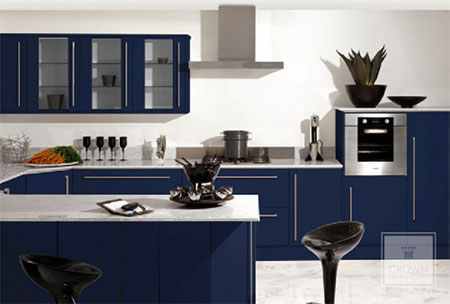
I have an architect, but no kitchen design. Help?
“We are in process of designing a 540 sq. ft. addition that will be part kitchen and part screened porch. The working plans for the space are in process; however, my architect is a young fellow who shares that he spends about 3 minutes per week in the kitchen and that we won’t get much help from him when it comes to kitchen layout.
On my first trip to (big box store), I met a kitchen planner who did some early cabinet layout work and shared that if I had just 4” more on the wall between the kitchen and porch, she could squeeze in a 9” cabinet and make a little more use out of one of the blind corners. I am a little frantic that this seems to be an odd way to design a cabinet layout…the walls are still flexible but I am unsure if I want to definitely use (big box store) and their brand of cabinets. I can’t go high end with cabinets, but I do want quality that will last.
Any ideas on how to proceed? We are spending a pretty penny on architect fees and it feels wrong to spend more money on design and layout…but I am willing to be convinced if it is the best way to go. –K.”
I sympathize – for both you and your architect. With regards to the architect fees, think of it this way: it’s not much different than a chef in a restaurant who brings a pastry chef on board. He can make a decent flan, but the pastry chef is capable of making desserts that the chef doesn’t even know about. (Of course, this analogy only works if you like desserts, I suppose.)
The challenge is that kitchens are no longer “standard” – almost every item can be customized. Not all products work in every kitchen and not every product even works well with other products. So your architect has done you a favor by admitting that he’s not an expert in the field.
Smaller studios and businesses may have some very experienced/trained kitchen designers and/or Certified Kitchen Designers and they might not even be more expensive than the big box stores. I know because I worked for years in my family’s showroom and my current company has a retail cabinet division where the prices are very competitive.
There are two reasons why a comparable price cabinet may be different:
- The company is using them as a “loss leader” – e.g. selling next to cost to bring you into the store (in which case, this is a deal for you – go for it.)
- The designer is actually designing the kitchen for you. Let me explain what that means. A professional designer designs for your lifestyle. Budget is an important consideration but a waste of money if what you receive isn’t as useful as it can be, especially in kitchen design.
As a designer, I see poor design layouts based on budget all the time. The areas where corners are cut are only apparent if you have some idea of what to look for. For example, corners designed with a less expensive blind corners rather than a lazy Susan corner, adding a lot of spacers or fillers between cabinets where they shouldn’t be in order to save extra cabinets, or omitting a 2-step crown molding off the design. This isn’t to say that all cabinet sales work towards that goal but merely to point out what you may not have considered. Any and all of these can affect the bottom line, especially moldings, which can add anywhere from $ 500.00 – $ 1,300.00 in a mid-size kitchen design depending on amount and style. Don’t always assume a higher price is higher simply because it’s overpriced. There are too many custom choices in kitchens today to be sure of that…even if you’re a designer!
I can’t speak for all designers, but the kitchen designers I know design for the client’s lifestyle, not simply the bottom line. Of course it’s our livelihood too, but there’s also professional pride at stake; our reputations make or break our career. Basic, cookie-cutter layouts aren’t what we specialize in – we want to find out what your storage requirements are, where we need to position the small appliances, how we can get the kids making their after-school snacks out of the way so you can work in your kitchen.
See if you can’t arrange some interviews with smaller companies with the same cabinet lines or similar. If you can find family businesses, even better, but I’m cheerfully prejudiced. There is either no cost or minimal cost to have the designer work with you if you’re buying the cabinets from them.
As another option: consider hiring an independent kitchen designer. Pay them for their expertise. Get them to work with your architect for the best fit. A good designer will charge anywhere from $ 50.00 – $ 150.00 depending on experience. The more experience, the less hours it takes. (At least it did for me and my clients.) Get the design hammered out first.
You never want look back and say, “If only I had done this…” While it may feel wrong now to spend all this money on the architect and have to spend more for a kitchen design, you won’t feel that way at all if it doesn’t turn out the how you want.
Morisseau, Kelly (2011-12-06). 20 Kitchen Design Questions Answered (Kindle Locations 76-77). Springline Media. Kindle Edition.

